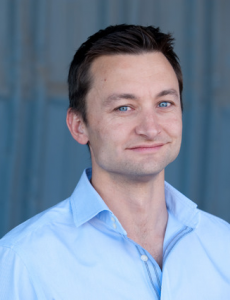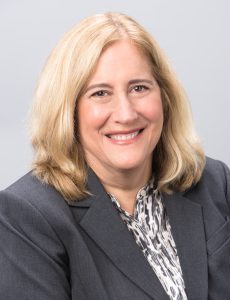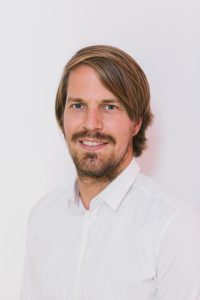Katherine Meckel article in the Washington Post
Research done by Katherine Meckel about how hydraulic fracking decreases infant health was featured in the Washington Post. Katherine Meckel’s research findings were also reported in other major news outlets, including CNN, The Wall Street Journal, NPR, The Los Angeles Times, and many other news outlets. The Washington Post article, titled “Fracking Sites May Raise the Risk of Underweight Babies, New Study Finds” is posted here in its entirety:
‘Living within half a mile of a hydraulic fracturing site carries a serious risk for pregnant women, a new study has found. The drilling technique, also known as fracking, injects high-pressure water laced with chemicals into underground rock to release natural gas.
Women who lived within that distance to fracking operations in Pennsylvania were 25 percent more likely to give birth to low-weight infants than were mothers who lived more than two miles beyond the sites.
The five-year study of more than 1.1 million births in the state between 2004 and 2013, published Wednesday in the journal Science Advances, also found lower birth weights, although not as low, in infants whose mothers lived between half a mile and two miles from a fracking site. Beyond two miles, there was no indication of any health effect to newborns, a significant drop-off, the study said.
“I think I was surprised by the magnitude of the impact within the half-mile radius,” said Michael Greenstone, a professor and director of the Energy Policy Institute at the University of Chicago, and one of three authors of the study. There are about 4 million births per year in the United States. According to the study’s research, about 30,000 births are within half a mile of a fracking site and 100,000 are within two miles. “I don’t think that’s an insubstantial number,” Greenstone said.
Greenstone said it’s important not to read too much into the study’s conclusion. “I like to joke that there’s a little bit for everyone to hate in this paper,” he said. “There’s a big effect within one kilometer of sites, which the oil and gas industry dislikes, but the impact on the population beyond that may not be massive, which opponents of fracking won’t like.”
Reid Porter, a spokesman for the American Petroleum Institute, an advocacy group for the oil and gas industry, condemned the study, saying that while it addresses a legitimate health issue in the United States, it “fails to consider important factors like family history, parental health, lifestyle habits” and other factors that lead to low birth weight.
In his emailed statement, Porter did not address why those factors might have led to underweight babies near the sites but not farther from them.
Food and Water Watch, a nonprofit environmental group, referred to the study in calling on Pennsylvania Gov. Tom Wolf (D), who wants to expand hydraulic fracturing in the state, to reverse course.
“This study adds to existing scientific literature that tells us the serious health consequences linked to fracking,” the group’s executive director, Wenonah Hauter, said in a statement. “Unfortunately, Gov. Wolf [is] encouraging news drilling and expanding fossil fuel operations. We call on him to heed the science.”
When Greenstone and his co-authors — Janet Currie, a Princeton University economics professor, and Katherine Meckel, an assistant professor of economics at the University of California at Los Angeles — embarked on the research, he said, the aim wasn’t to condemn fracking, which is a relatively new method of drilling vertically underground, then switching to a horizontal direction to reach gas trapped in shale rock formations.
The practice has come under scrutiny because of the potentially toxic chemicals used to crack the shale and the amount of water used to force out natural gas. State health officials and residents near fracking operations have complained that wastewater from fracking taints local drinking water. Companies in some cases have been forced to provide bottled drinking water for residents who relied on underground wells. A number of states, such as Maryland and New Jersey, have banned fracking.
A U.S. Geological Survey study in 2014 said pumping wastewater into deeply buried storage wells was probably why Oklahoma was experiencing more small earthquakes than California. The sites are also known to leak methane, a gas that’s up to 100 times more harmful than carbon dioxide in causing global warming in the atmosphere.
But those drawbacks are offset by the benefits of natural gas, Greenstone said. Hydraulic fracturing for oil and natural gas “has led to a sharp increase in U.S. energy production and generated enormous benefits, including abruptly lower energy prices, stronger energy security and even lower air pollution and carbon dioxide emissions by displacing coal in electricity generation.”
The authors hope that policymakers will use the study’s finding as a talking point in a robust debate over fracking. They chose to study Pennsylvania because they got access to birth record data that identified “the exact locations of the mothers and the wells,” Greenstone said. “This was like a great success of big data.”
Most drilling operations sit in remote areas where they have little chance of harming pregnant women.
But some sites in Pennsylvania are near Pittsburgh, and others in Texas are inside heavily populated Fort Worth.
“Different communities are going to feel differently about this,” Greenstone said. “If you’re in Fort Worth, where fracturing is occurring in a dense area, you’re probably going to feel differently about it than if you’re in rural North Dakota.”’





 As part of the MAE Distinguished Speaker series,
As part of the MAE Distinguished Speaker series, 